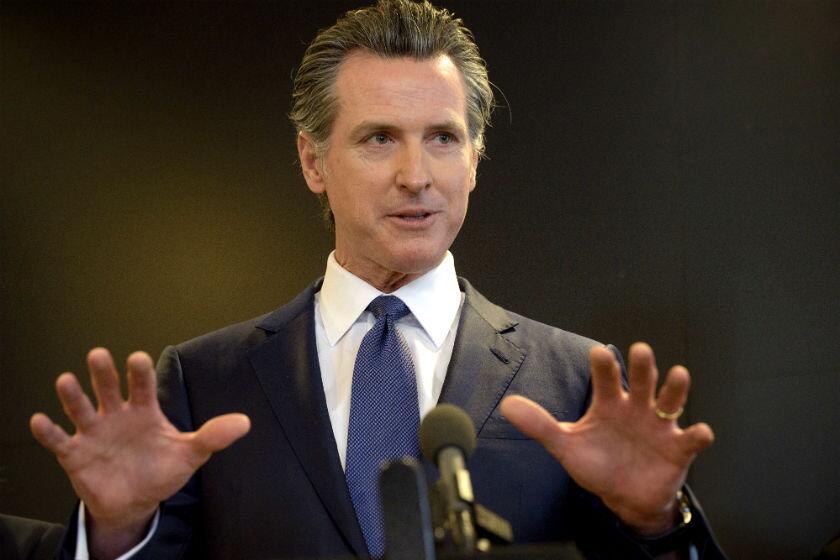GoodRx IPO shows there’s a lot of money to be made from bewildering drug prices
- Share via
Santa Monica’s GoodRx Holdings is preparing to offer up to $100 million worth of shares to the public next week as it builds what it calls “the leading consumer-focused digital healthcare platform in the United States.”
Is the company a good investment? Not my place to say.
But this much is certain: GoodRx is a stark reminder that our healthcare system is so pitifully dysfunctional, there’s money to be made in doing what our elected officials are unwilling, or unable, to accomplish.
In other words, businesses and investors recognize a chance to profit by helping consumers not get fleeced by the drug industry.
“Pharmaceutical pricing is in the running for least-transparent pricing within the health sector, and that’s saying something,” said Jeffrey Clemens, a healthcare economist at UC San Diego.
He called the lack of transparency in the drug market “a drag on the quest to get good value for our healthcare dollars.”
GoodRx benefits from America’s healthcare shortcomings by offering coupons aimed at providing users with reasonable prices for prescription drugs — something politicians have steadily failed to accomplish.
The company also helps bring sunlight to the pharmaceutical market by showing how much different drugstores charge for medicine. This assists consumers both in comparison shopping and in seeing the lunacy of a marketplace with no price controls whatsoever.
In the United States, unlike most other developed countries, drug companies can charge whatever they want. This is a recipe for taking advantage of some of the most vulnerable members of society.
“I would view our failure to use government to collect and disseminate information about prices as a failure to appreciate one of the more unambiguously positive roles the government can play,” Clemens said.
I first wrote about GoodRx eight years ago, a few months after the company opened for business.
Scott Marlette, a former Facebook employee who co-founded GoodRx with Trevor Bezdek and Doug Hirsch, told me at the time that the company aimed to do for prescription meds what other comparison sites did for things like cars and electronics.
“There’s no other site like it that we know of,” Marlette said. “We wanted to create a product where people can find the best pharmacy to go to.”
GoodRx positioned itself from the get-go as a resource for the millions of Americans without health insurance who may have to pay full price for medicine.
It also helped people who do have coverage to realize that, with a little hunting, they can often track down generic meds for less than the typical insurance co-pay.
“Health is probably the one area of the economy where you rarely ask what the price is upfront,” Marlette told me. “You just want to get better. But you have choices. And if you know where to get something cheaper, you’d go there.”
That insight has served GoodRx well. Unlike a lot of tech companies that go public, this one actually makes money.
According to the filing for its initial public offering, GoodRx earned nearly $55 million in profit during the first half of 2020 — up an impressive 75% from the same period a year before.
Lauren Casparis, a PR person representing GoodRx, declined to comment on the company’s financials, citing the “quiet period” required of firms in the days before an IPO.
The company’s shares are expected to be listed on the Nasdaq stock exchange Wednesday.
Casparis said that, along with pharmaceutical discount coupons, GoodRx offers consumers a subscription service for additional price cuts and digital access to medical professionals through “telehealth” hookups.
It’s an impressive site. For example, a search on GoodRx for atorvastatin, the generic version of the cholesterol drug Lipitor, revealed retail prices at Los Angeles pharmacies that varied from $19 at Costco to $250 at Walgreens.
This is, of course, insane, as is the fact that GoodRx is able to negotiate discount prices (with its coupons) that are a small fraction of these list costs.
Some experts say there’s no need for greater transparency in the drug market.
“The prices are negotiated by large corporations that already have all the facts,” said William Comanor, a professor of health policy and management at UCLA.
“How many consumers, when they buy a car, know how much the manufacturer paid for spark plugs?” he asked. “They know nothing about the cost of spark plugs and they don’t care.”
I understand his point. But prescription drugs aren’t spark plugs, which play an extremely small role in the cost of a new car and are not subject to wild price inflation.
Indeed, where many people get hosed on spark plugs isn’t the cost of the product but the absurd prices that mechanics charge to install them.
With prescription drugs, you’re typically flying blind.
“The price I pay out of pocket depends on whether I’m insured, what kind of insurance I have, whether my insurance plan covers that drug, how well my insurance company and pharmaceutical benefit manager has negotiated with the drug manufacturer, whether I’m eligible for discounts, whether I’ve met my deductible, and a host of other factors,” said Aparna Soni, an assistant professor of public administration and policy at American University.
“Patients are often unaware of how much they’ll pay for a prescription drug until they’re actually at the check-out counter making the purchase,” she said.
Xi Chen, an associate professor of public health at Yale University, said GoodRx plays a helpful role in enabling ordinary people to see the frequently wide gaps in drug pricing throughout the market, especially for generic meds that are more easily marked up by drugstores.
“That said,” he told me, “it is not a substitution for the public sector to make efforts to enhance transparency and to cut drug prices. The American healthcare system simply cannot leave this job to the private sector alone.”
Chen and other experts are quick to point out that Medicare, the government-run insurance program, is prevented by law from negotiating drug prices on behalf of its 60 million beneficiaries.
In this way, America has abandoned the most useful tool in lowering drug costs — the method most other developed countries with single-payer systems use to make sure citizens pay fair prices for drugs.
“The more leverage the buyer has, the lower the price they obtain,” Chen said. “This is Econ 101, and is true in every industry.”
Our approach is basically to let the sick fend for themselves.
And that’s good news for GoodRx.
Hirsch, one of the co-founders, acknowledged to CNBC a few years ago that perhaps the biggest risk to GoodRx’s business is the United States getting serious about healthcare reform, especially with introduction of a “Medicare for all” insurance system.
“If America as a country decided to keep all Americans healthy, and things were upfront and transparent,” he said, “there would be no need for GoodRx.”
In fact, the company’s IPO filing specifies that healthcare reform represents a risk to its business.
No need to worry. America is not a country that’s committed to people being healthy and healthcare prices being upfront and transparent.
Which is precisely why soon-to-be-public GoodRx, unlike many other tech firms, is so profitable.
There’s a lot of money to be made from the sick. That’s the American way.
More to Read
Inside the business of entertainment
The Wide Shot brings you news, analysis and insights on everything from streaming wars to production — and what it all means for the future.
You may occasionally receive promotional content from the Los Angeles Times.











